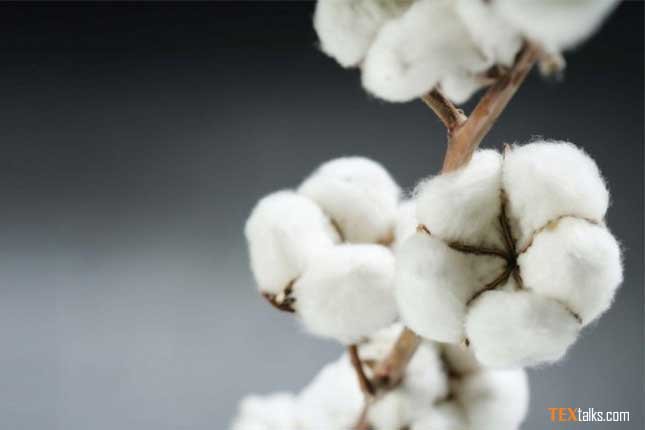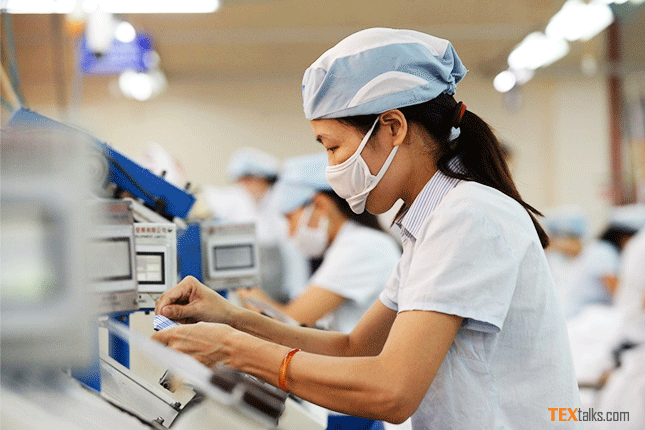US cotton supply chain under stress
The US cotton prices have been declining from March 2020 as almost every manufacturer has suspended the production lines and retailers have shut shops across the country due to worldwide COVID-19 pandemic.
The weak demand under the threat of COVID-19 has sharply impacted the US cotton prices which decreased to 50 cents/lb after more than a decade. According to the US Department of Agriculture (USDA), the US spot cotton prices averaged 52.58 cents/lb for the week ending March 19 from 56.15 cents/lb in the previous week, which was reported as the lowest weekly average since September 3, 2009. The weekly average of cotton price had reached to 70.28 cents a year earlier in the same period. The cotton prices ranged between 55.31 cents (on March 13) and 49.75 cents (on March 19).
The US stock of previous season that ended last fall is being used in the state now as the cotton plantation of this season hasn’t yet begun or is in the early planting stages. Also, the orders for apparel and fibre stand cancelled.
According to Cotton Inc, significant changes have occurred in macroeconomic conditions due to the outbreak of COVID-19. The Organization for Economic Cooperation and Development revised the forecast for global GDP growth in 2020 in early March with growth rate of 2.4 per cent which was below the 2.9 per cent growth rate in 2019. According to recent report from IHS Markit, recession would be there in the 2nd quarter and recovery through the 4th quarter.
US changes tariff policy
The US government has removed the tariffs for certain China-made products in the List 3 and List 4A, which was previously charged for the next few months. For products approved in the exclusion, duty breaks would be retrospective with effect September 24, 2018, when the $200 billion in List 3 tariffs first took effect through August 7, 2020. For apparel, women’s, girls’ and infants’ pants, skirts, and dresses made of polyurethane-coated leather, are not inflicted with tariffs in trade-war. Now the exempted accessories include backpacks, duffel bags and tote bags of man-made fibres.
For textiles, cashmere or camel hair yarn, polyester filament tow, woven polyester or cotton/poly blends coated with polyurethane, and circular single knitted fabric, would also see the duty break. According to the USTR (Office of the United States Trade Representative), more products from the textiles and clothing could be excluded further. USTR has opened a docket for members of the public, businesses, and government agencies to submit comments if they want further modifications to the 301 tariffs.
Soaring Textile and Apparel Shipments to US in January
According to the Department of Commerce’s Office of Textiles and Apparel, import of cotton, wool, manmade fibre, silk blend, and non-cotton vegetable fibre textile and apparel products in January 2020, was equivalent to 5.69 billion square metres, up 10.3 per cent from December 2019 but down 9 per cent from January 2019.
In January 2020, textile imports were 69.3 billion SME, up 0.1 per cent from a year earlier, as textile imports increased 1.7 per cent to 41.8 billion SME and apparel imports fell 2.1 per cent to 27.5 billion SME.
Coronavirus Devours US Garment Business
Garment factories in the country have either shuttered or stalled with the spread of COVID-19 pandemic. US is strongly restricting the shipments of the textiles and clothing raw materials from China with zero orders from stores of brands and retailers.
Approximately more than 98 per cent of the clothing used by Americans is supplied by overseas producers. According to census data, some 67,600 makers of apparel, accessories and finished textile products are working in the garment districts of Los Angeles and New York City. At present, more than 15,000 people in New York City were found positive for COVID-19. Hence all the non-essential businesses in the New York City have been closed and garment manufacturing doesn’t count as an essential service. According to industry experts, if the virus continues till July or August as also reiterated by president Trump, then they won’t survive so long without income.
Strive Manufacturing, the first factory in the US to gain both Global Organic Textile Standard and Organic Content Standard certifications, is negotiating with the LA Mayor’s office to become an essential manufacturer of medical supplies. American Apparel’s Los Angeles Apparel venture can make 300,000 surgical masks and 50,000 gowns per week in its 150,000-square-foot factory in downtown LA. Automakers such as GM and Ford are quickly trying to convert to produce masks and ventilators for the billions of pieces of PPE needed to combat the pandemic.
According to data released by the Bureau of Economic Analysis (BEA), consumer spending on clothing and footwear moved down by 1 per cent to $407.71 billion in February compared to $403.67 billion spent in January. Economists and consumer analysts expected a strong cut in March spending, as apparel and footwear stores closed across the country.

New COVID-19 Legislation for cotton growers
US president signed the newly passed $2 trillion Coronavirus Aid, Relief & Economic Security Act (CARES Act) on March 27. Several supplemental appropriations for US farmers were put in place followed by the National Cotton Council and other organisations with agricultural allies in Congress.
USDA got $49 billion in the funding package to fight against the COVID-19 disaster. The distribution is given as below. $9.5 billion to keep up agricultural producers (livestockand specialty crop producers)
– $14 billion for the Commodity Credit Corporation (CCC) and increase the borrowing authority of USDA to aid agriculture in times of crisis. CCC has been providing the funds for Market Facilitation Program since last two years
– The Secretary of Agriculture has been also given authority through the end of September 2020 to extend the term of marketing assistance loans to 12 months from the current nine months
– The Treasury has been given authority to set criteria to allow farm credit institutions to be eligible lenders under the programme until the national COVID-19 emergency expires.
US textiles and PPE demand and supply dynamics
In early March, the US removed the Chinese face masks and some other medical equipment from tariffs to avoid the situation of dire shortages. The US imported 130,000 N95 masks, 1.7 million surgical masks and other medical supplies from China recently in March and distributed majorly to the hardest-hit states including New York, New Jersey and Connecticut.
In light of sharp increase in the spread of COVID-19, government called on the Defence Production Act to expand production of hospital masks and protective gear. This act was enacted in 1950, and it gives the federal government a wide range of powers to enlist private companies to help deal with the national crisis.
Trump’s 90-Day tariff deferral to save the industry
President Trump has reportedly prepared to announce a 90-day deferral on tariffs for certain imports. The USTR however was not available for comment, according to Bloomberg. Most-favoured nation or MFN tariffs are the highest rates countries agree to impose on other members of the World Trade Organization (WTO) for product groups like textiles, clothing and footwear.
According to the company experts, delaying duties would help them to preserve cash flow while there is little or no revenue for long periods and to save the jobs. Many retailers have already removed workers or furloughed them, and executives’ pay cuts have started. The 90-day pause on import duties is awaiting Trump’s approval.
US buyers to stop buying Vietnamese textile and apparel products
Many US partners have rescinded the receipt of the textile and garment products for three to four weeks by sending notice to their Vietnamese partners. Approximately half of all textile exports from HCM City go to the US.
US exploring cotton’s value in face covers
A study conducted by the US researchers from government laboratories and academia on the stability of the SARS-CoV-1 virus on different surfaces showed that copper and cardboard seem to be better as compared to plastic and stainless steel. No SARS-CoV-1 virus was measurable on copper and cardboard beyond eight hours. Also, this study inferred that viruses don’t persist longer on cellulosic materials. In addition, moisture regain of cellulosic materials will show advantage as humidity affects the persistence of virus on the material. The wide research on cotton showed that advanced applications of the cotton such as toxic chemical decontamination and oil absorbancy would be significant against the spread of COVID19.



